Waters
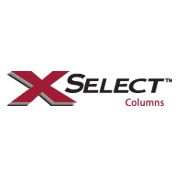
Waters
XSelect Columns
XSelect™ HPLC columns are designed for scientists who routinely develop chromatographic methods. They provide you with a diverse selection of sorbents to help you separate the most difficult analyte co-elutions.
XSelect columns are:
- Designed for selectivity – improve your ability to separate co-eluting peaks
- Ideal for rapid method development – reduce the time and cost spent developing methods
- Intended for isolation and purification – highest analyte mass loading available
The XSelect™ family of columns contains both advanced hybrid CSH technology, as well as, silica-based HSS technology with a broad selection of optimized bonded ligands. It is the combination of base particle and bonded ligands that influences analyte selectivity. Each, when used alone, does not create dramatic selectivity changes; however, in combination, the substrate and ligand create the ultimate tools for enhancing analyte selectivity.
CSH Technology
The third generation of hybrid particle technology has evolved to create a Charged Surface Hybrid (CSH™) particle. Based on Waters patented Ethylene-Bridged Hybrid [BEH] particle technology, the CSH particles incorporate a low-level surface charge, designed to improve sample loadability and peak asymmetry in low-ionic-strength mobile phases, while maintaining the mechanical and chemical stability inherent in BEH particle technology.
Advantages of CSH Technology include:
- Superior peak shape for basic compounds
- Increased loading capacity
- Rapid column equilibration after changing mobile-phase pH
- Improved batch-to-batch reproducibility
- Excellent stability at low pH
The CSH particle is formed from a synthetic pathway starting with an unbonded BEH particle. Each step of the process is carefully monitored and process controlled to ensure that the result yields a highly stable and reproducible product for subsequent ligand bonding. The process starts by chemically bonding a surface charge to the BEH particle creating a Charged Surface Hybrid. This process is highly controlled to exacting standards to ensure optimized surface coverage. Too much surface charge, or too little surface charge, hinders chromatographic performance and will result in a sorbent that offers poor analyte loadability and peak shape. The final step of the particle synthesis is the bonding and end-capping using the desired ligands. The controlled surface ratio of bonded ligand to end-cap is critical to final column performance.
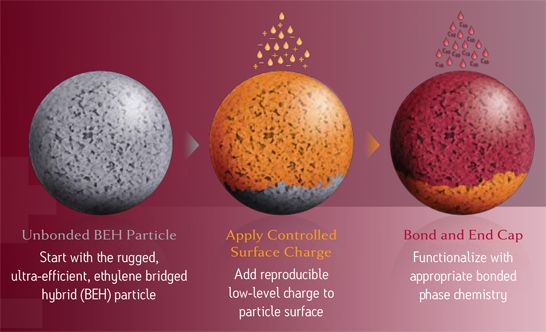
CSH Technology dramatically improves virtually all facets of LC column performance in acidic, low-ionic-strength mobile phases that are commonly used in the chromatographic laboratory.
HSS Technology
High pore volume silica-based HPLC particles do not possess the mechanical stability necessary to withstand the high pressures inherent of UPLC® separations. This becomes important when your laboratory needs to transfer methods from your existing HPLC instrumentation to an ACQUITY UPLC® system. This mechanical limitation led Waters material scientists to develop a silica particle designed for high mechancial stability and provide long column lifetimes and UPLC efficiencies at high pressures. The High Strength Silica (HSS) particle is the first and only 100% silica-based particle designed, tested and intended for both HPLC and UPLC separations [1034 bar].
Column Chemistries
Waters full line of state-of-the-art XSelect™ HPLC columns are chosen by scientists who understand that performance and innovation are linked and their success depends on them.
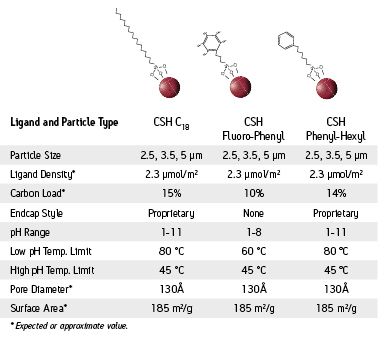
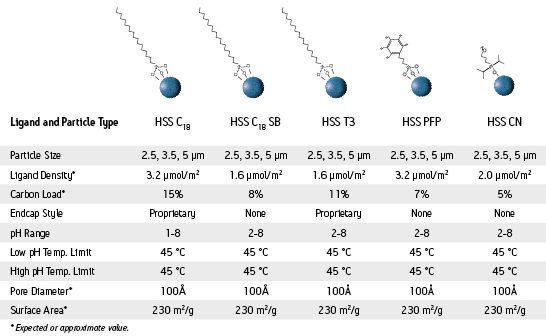
XSelect CSH C18 - general purpose columns that provide alternative selectivity compared to other C18 sorbents. Charged Surface Hybrid (CSH™) technology helps overcome column related problems such as peak shape asymmetry and poor loading for basic compounds, column bleed, and slow mobile-phase re-equilibration.
XSelect CSH Fluoro-Phenyl - designed to maximize selectivity differences, and provides maximum method development freedom, especially when using low-pH mobile phases. The non-encapped sorbent provides enhanced retention of acidic compounds.
XSelect CSH Phenyl-Hexyl - provides alternative analyte selectivity compared to traditional reversed-phase columns and are a valuable tool for method development. The trifunctionally bonded C6 phenyl-ligand is a robust, low bleed sorbent that selectively retains polyaromatic compounds through pi-pi interactions
XSelect HSS C18 - the most stable commercially available bonded phase for low-pH mobile phases, and does not suffer from peak shape issues that plague older stationary phases, which rely upon steric protection (and lack of endcapping) to produce stability at low pH.
XSelect HSS C18 SB - intended for low pH separations that contain complex mixtures of basic and non-basic compounds. XSelect HSS C18 SB columns provide alternative analyte selectivity compared to most modern, high coverage, fully endcapped C18 stationary phases.
XSelect HSS T3 - trifunctional alkyl-C18-bonded phase that is compatible with 100% aqueous mobile phases and provides ultra-low MS bleed, while promoting superior polar compound retention.
XSelect HSS PFP - a non-endcapped silica-based HPLC column designed for low-pH separations that require alternative selectivity compared to a fully endcapped, high coverage C18 phase.
XSelect HSS CN - an ultra-performance general purpose propyl cyano bonded phase that provides superior peak shape for bases, increased retention, and extremely long column lifetimes at low pH.
Selectivity
Method development scientists use selectivity and retentivity to influence chromatographic behavior. The selection of phases in the XSelect™ family offers the chromatographer the ability to retain highly polar analytes using XSelect HSS T3, which is complimentary to the retention behavior offered by XSelect CSH™ fluoro-phenyl and phenyl phases.
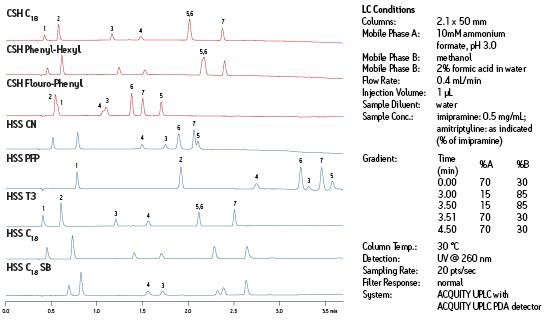
Selectivity is manipulated through the use of pH, mobile-phase buffer strength, organic modifier, and column choice. Mobile-phase conditions and organic modifier are easy to control and understand. It is much more difficult for a chromatographer to determine how different one stationary phase is from another. By plotting retention factors to compare columns, you can easily determine how different a particular column is to another.
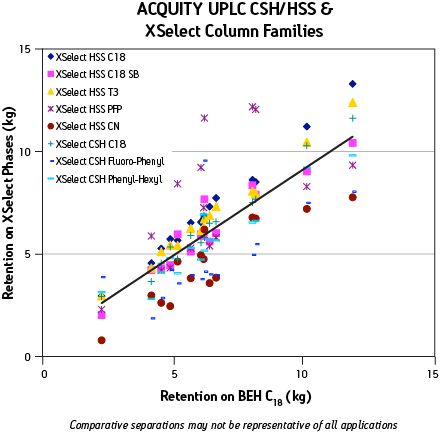
게시물수정
게시물 수정을 위해 비밀번호를 입력해주세요.
댓글삭제게시물삭제
게시물 삭제를 위해 비밀번호를 입력해주세요.
